If you think all snake plants look alike, you’re in for an eye-opening surprise. Beyond the common varieties found at your local garden center, there’s a fascinating world of rare Sansevieria specimens that showcase nature’s creative genius. From the massive paddle-shaped leaves of the Whale Fin to the spiraling foliage of the Twisted Sister, these uncommon varieties offer unique patterns, colors, and growth habits that’ll transform your plant collection.

Contents
1. Cylindrica Snake Plant
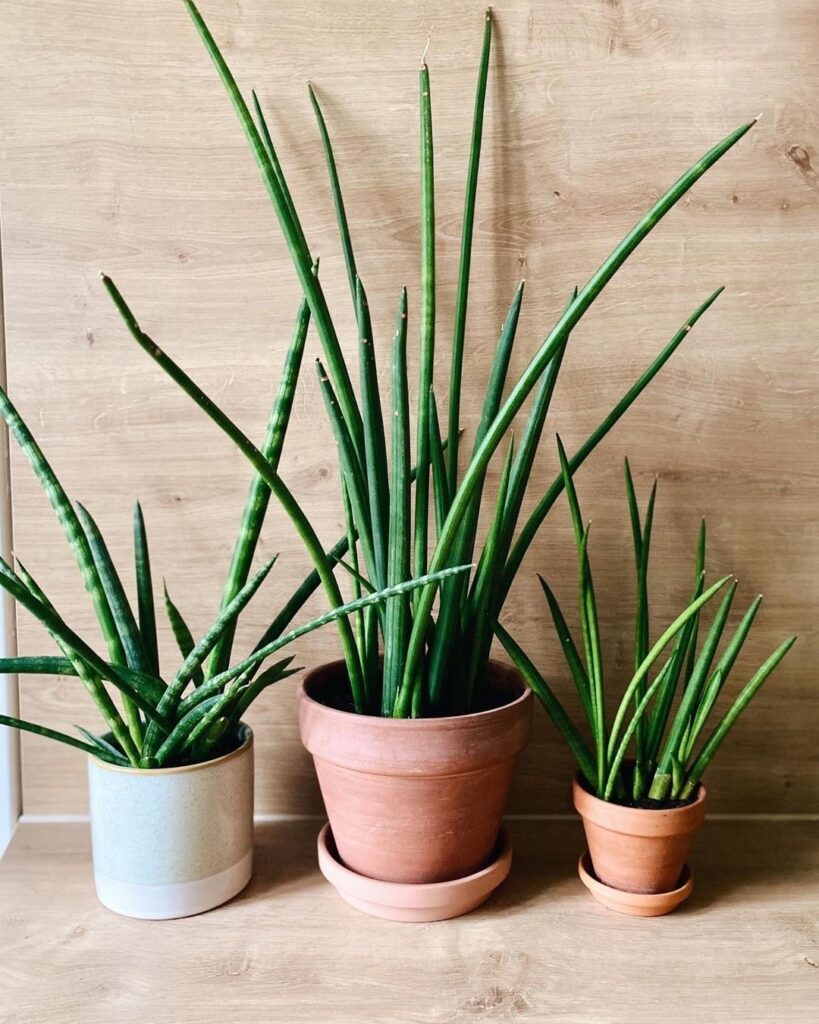
The Cylindrica Snake Plant (Sansevieria cylindrica), also known as the African Spear Plant or Spear Sansevieria, features distinctive cylindrical leaves that grow upright in a fan-like pattern. These round, pencil-like leaves can reach heights of several feet and display a gray-green color with subtle dark green banding. Unlike the flat leaves of common snake plants, these cylindrical leaves are rigid, smooth, and pointed at the tips, giving the plant a modern, architectural appearance that makes it popular in contemporary interior design.
- Light: Bright indirect light to partial sun; can tolerate low light but grows best with moderate to bright light
- Water: Allow soil to dry completely between waterings; water sparingly in winter
- Soil: Well-draining, sandy potting mix
- Humidity: Adaptable to any humidity level
- Temperature: 60-85°F (15-29°C)
- Fertilizer: Light feeding with balanced fertilizer during growing season
- Potting: Prefers to be slightly root-bound; repot every 2-3 years
- Drainage: Requires excellent drainage to prevent root rot
2. Star Pagoda Snake Plant
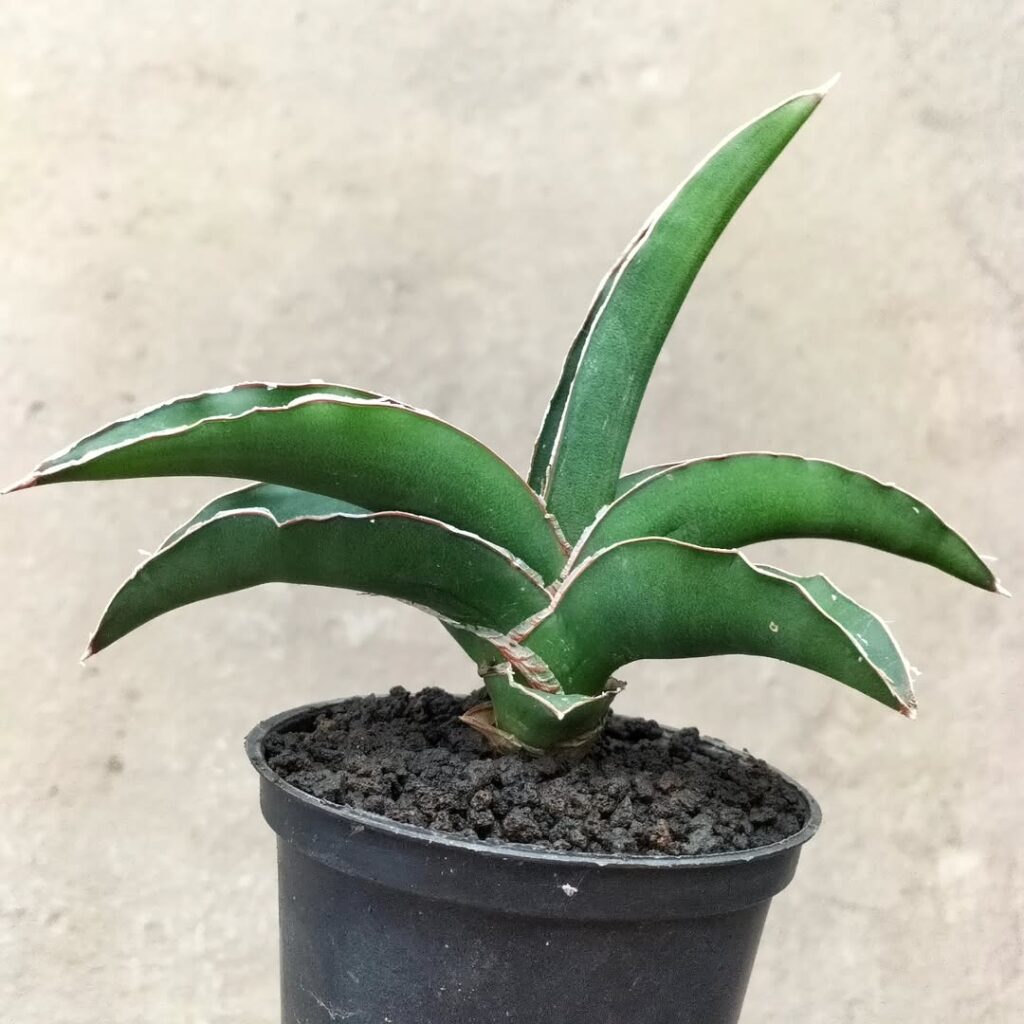
The Star Pagoda Snake Plant (Sansevieria ehrenbergii) features striking architectural foliage with sword-like leaves that grow in a fan formation, resembling a pagoda temple. Its leaves are thick, rigid, and arranged in a symmetrical pattern, growing upright and slightly outward from a central point. The leaves have a grayish-green coloration with subtle dark green bands and sharp pointed tips. This variety can grow quite tall, reaching heights of 4-5 feet in ideal conditions, making it an impressive statement piece in any indoor space.
- Light: Bright indirect light to partial sun; can tolerate low light but grows best with moderate to bright light
- Water: Allow soil to dry completely between waterings; water sparingly in winter
- Soil: Well-draining, sandy soil mix
- Temperature: 60-85°F (15-29°C)
- Humidity: Adaptable to various humidity levels; prefers average home humidity
- Fertilizer: Light feeding with balanced fertilizer during growing season
- Container: Wide, heavy pot with drainage holes to accommodate spreading growth pattern
- Propagation: Division of rhizomes or leaf cuttings
3. Moonshine Snake Plant

The Moonlight Snake Plant (Sansevieria trifasciata ‘Moonshine’) is a striking variety of snake plant characterized by its silvery-white to pale green coloring with darker green striping patterns. This rare cultivar features the same upright, sword-like leaves as traditional snake plants but stands out for its unique moonlit appearance. The leaves have a slightly mottled texture and can grow up to 2-3 feet tall, making it an excellent statement plant for indoor spaces.
- Light: Bright indirect light to partial shade; can tolerate low light but may lose variegation
- Water: Allow soil to dry completely between waterings; water less during winter months
- Soil: Well-draining potting mix; preferably a cactus or succulent blend
- Temperature: 60-85°F (15-29°C)
- Humidity: Tolerates average indoor humidity levels
- Fertilizer: Light feeding with balanced fertilizer during growing season
- Pot Requirements: Container with drainage holes; prefers to be slightly root-bound
- Propagation: Division of rhizomes or leaf cuttings
4. Whale Fin Snake Plant
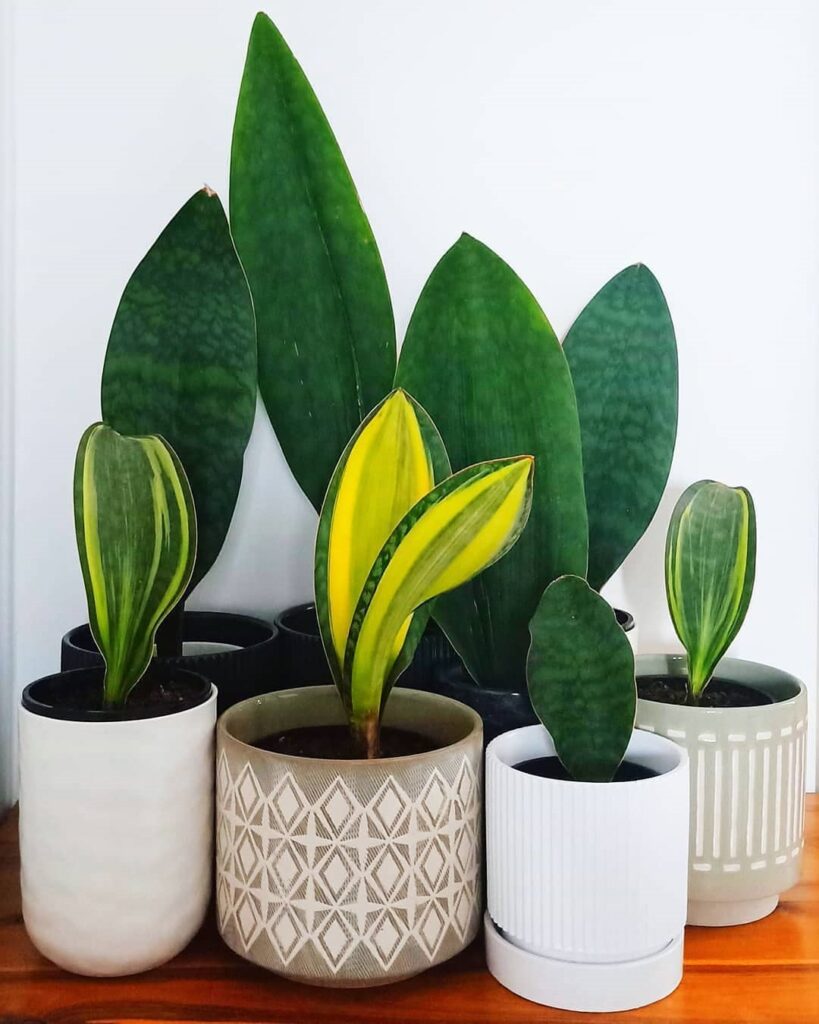
The Whale Fin Snake Plant (Dracaena masoniana) is a striking and rare variety of snake plant known for its distinctive single leaf that resembles a whale’s fin. Growing up to 4 feet tall, this unique plant features one large, paddle-shaped leaf per growth point, with thick, rigid foliage displaying attractive mottled patterns of dark and light green. Unlike traditional snake plants with multiple leaves, the Whale Fin typically produces solitary leaves, making it an eye-catching architectural specimen in any indoor space.
- Light: Bright indirect light to partial shade; can tolerate low light but grows best with moderate light
- Water: Allow soil to dry between waterings; water sparingly in winter; highly susceptible to root rot if overwatered
- Soil: Well-draining potting mix with added perlite or sand
- Humidity: Adaptable to average indoor humidity levels
- Temperature: 65-85°F (18-29°C)
- Fertilizer: Light feeding with balanced fertilizer during growing season
- Pot Type: Container with drainage holes
- Propagation: Leaf cuttings or division of rhizomes
- Growth Rate: Slow growing
5. Twisted Sister Snake Plant
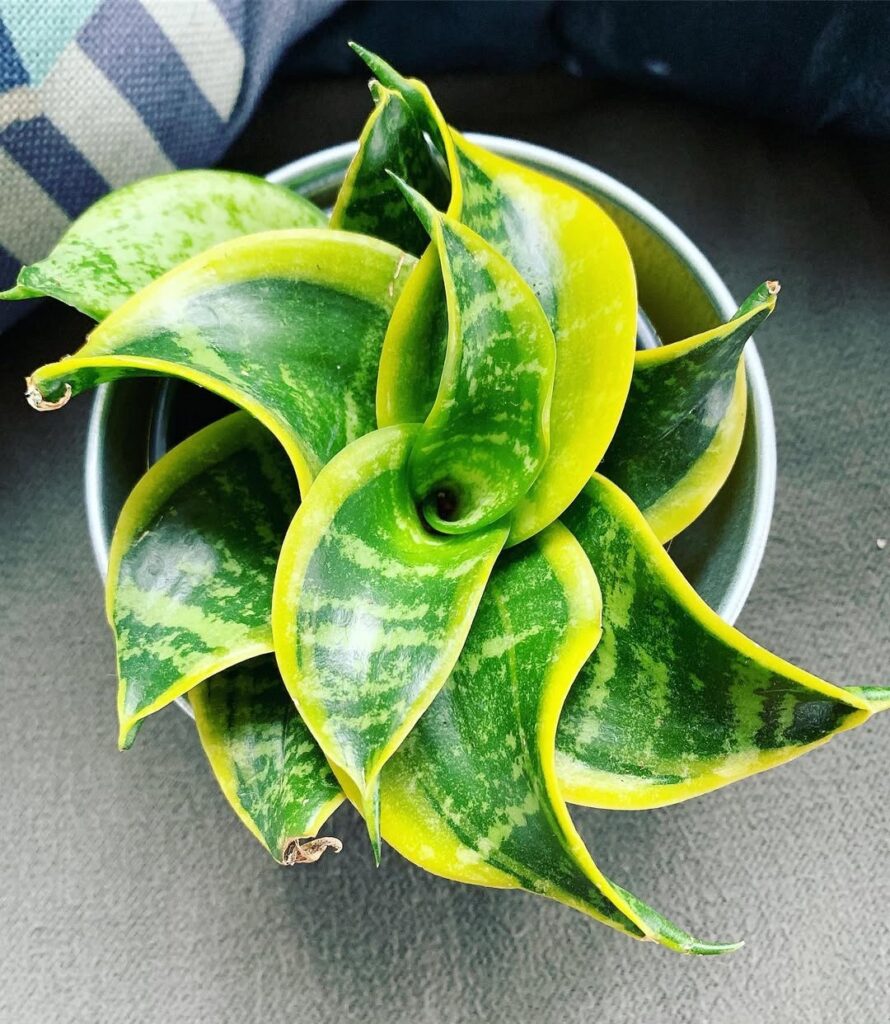
The Twisted Sister Snake Plant (Sansevieria trifasciata ‘Twisted Sister’) is a compact and distinctive cultivar that stands out for its uniquely curled and twisted leaves. Growing to about 15 inches tall, this dwarf variety features yellow-green striped foliage that curves and spirals as it grows, creating an eye-catching architectural display. Each leaf maintains the characteristic thick, succulent-like texture of traditional snake plants while exhibiting a peculiar twisted growth pattern that gives this variety its memorable name.
- Light: Tolerates low to bright indirect light; avoid direct sunlight which can burn leaves
- Water: Allow soil to dry between waterings; water less during winter months
- Soil: Well-draining potting mix; preferably succulent or cactus soil
- Humidity: Adapts to most indoor humidity levels
- Temperature: Thrives in 60-85°F (15-29°C)
- Fertilizer: Light feeding with balanced fertilizer during growing season
- Container: Pot with drainage holes; slightly rootbound conditions preferred
6. Blue Dragon Snake Plant
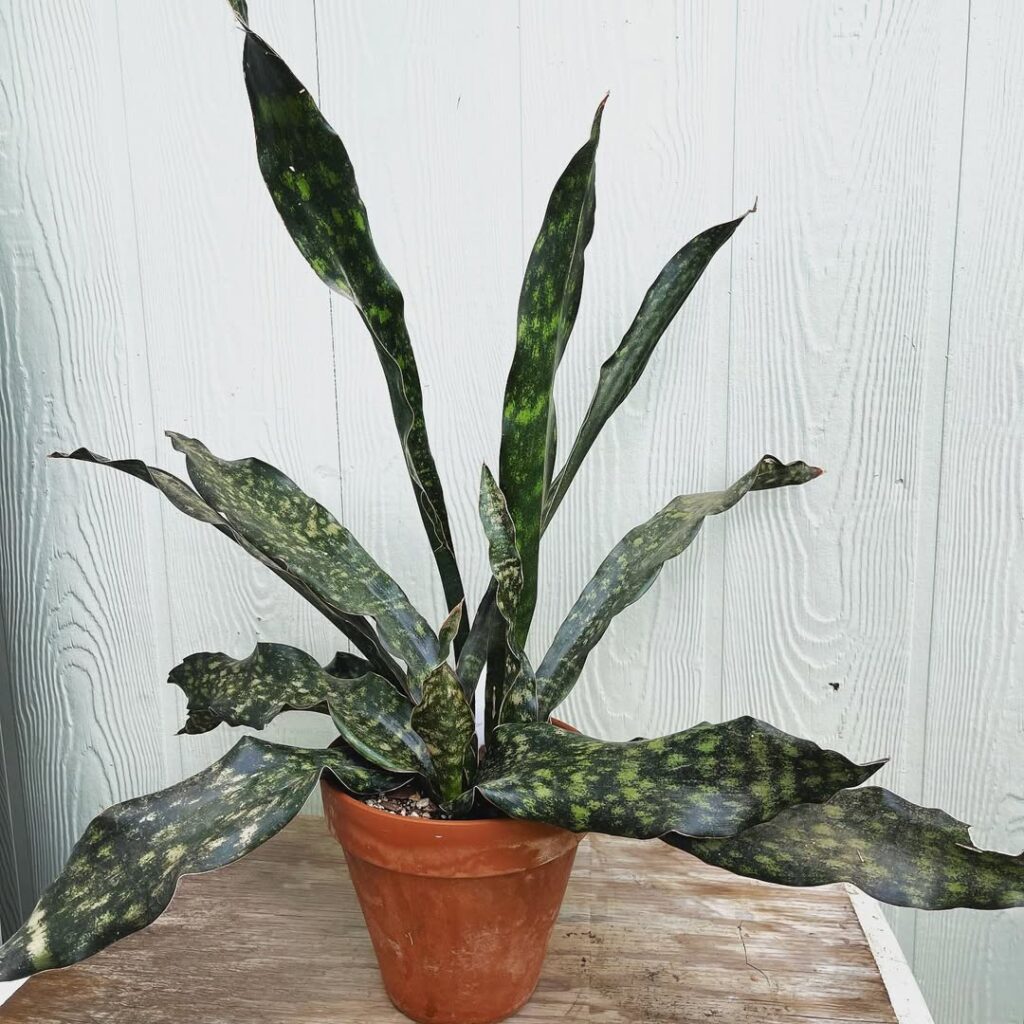
The Blue Dragon Snake Plant (Sansevieria kirkii var. pulchra) is a striking variety known for its unique blue-gray coloring and distinctive mottled patterns on its leaves. Unlike common snake plants, this rare cultivar develops broad, paddle-shaped leaves with wavy edges that can grow up to 3 feet tall. The leaves feature intricate silver-blue markings against a darker blue-green background, giving it an almost metallic appearance that inspired its dragon-themed name.
- Light: Bright indirect light to partial shade; can tolerate some direct morning sun
- Water: Allow soil to dry completely between waterings; water sparingly in winter
- Soil: Well-draining, sandy potting mix
- Temperature: 60-85°F (15-29°C)
- Humidity: Tolerates low humidity but prefers moderate levels
- Fertilizer: Light feeding with balanced fertilizer during growing season
- Container: Pot with drainage holes to prevent root rot
- Propagation: Division of rhizomes or leaf cuttings
7. Bantel’s Sensation Snake Plant
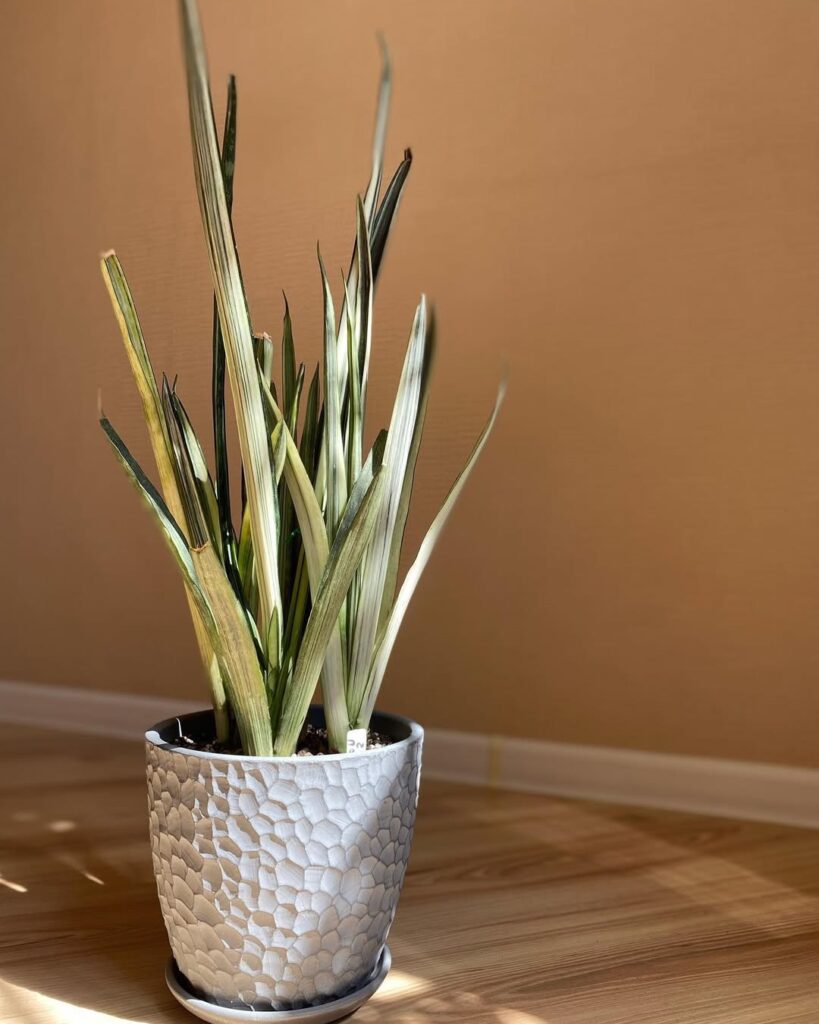
Bantel’s Sensation is a striking cultivar of the Sansevieria trifasciata species, distinguished by its narrow, upright leaves featuring distinctive white vertical striping against a dark green background. The leaves grow in a tight, vertical formation reaching heights of 2-3 feet, creating an elegant architectural appearance. This rare variety maintains the hardiness of traditional snake plants while offering a unique ornamental appeal that makes it highly sought after by collectors.
- Light: Bright indirect light; can tolerate low light but variegation may fade; avoid direct sunlight
- Water: Allow soil to dry between waterings; water less in winter; highly drought tolerant
- Soil: Well-draining potting mix; prefer sandy, loamy soils
- Temperature: 65-85°F (18-29°C)
- Humidity: Adaptable to various humidity levels; prefers average home humidity
- Fertilizer: Light feeding during growing season with balanced fertilizer
- Container: Pot with drainage holes; can tolerate being slightly root-bound
8. Black Gold Snake Plant
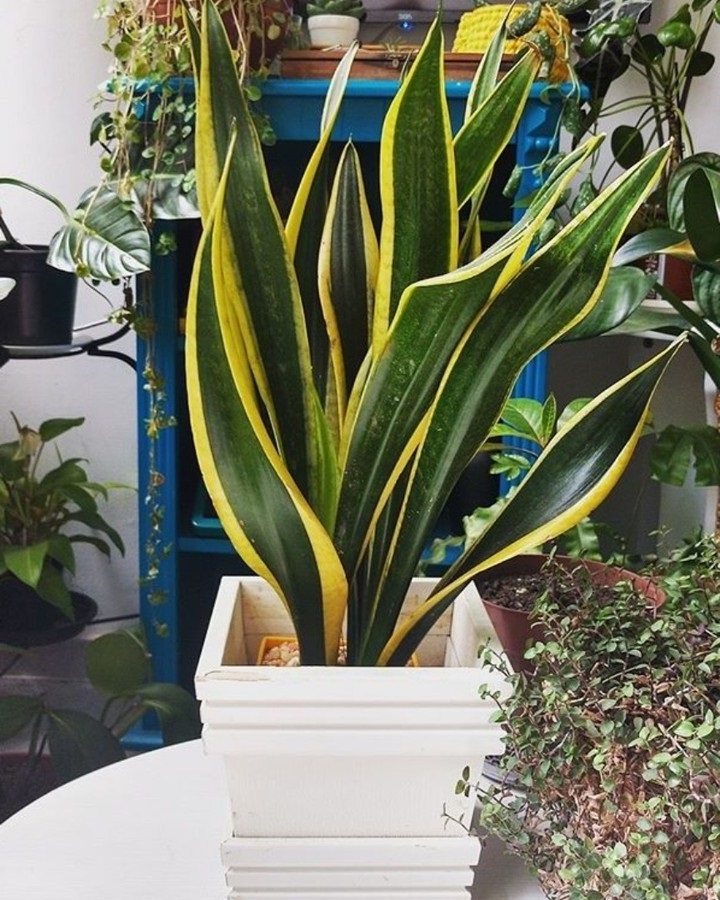
The Black Gold Snake Plant (Sansevieria trifasciata ‘Black Gold’) is a striking variety characterized by its deep green leaves with golden-yellow margins. This cultivar typically grows to heights of 2-3 feet and features thick, upright leaves arranged in a rosette pattern. The contrast between the dark center and bright edges creates a dramatic appearance, making it a popular choice for modern interior design schemes and low-light areas.
- Light: Tolerates low to bright indirect light; avoid direct sunlight which can fade the variegation
- Water: Allow soil to dry completely between waterings; water less during winter months
- Soil: Well-draining potting mix; preferably succulent or cactus soil
- Temperature: 60-85°F (15-29°C)
- Humidity: Adaptable to any humidity level
- Fertilizer: Light feeding with balanced fertilizer during growing season
- Pot: Container with drainage holes to prevent root rot
- Propagation: Division of rhizomes or leaf cuttings in spring
9. Jaboa Snake Plant

The Jaboa Snake Plant (Sansevieria jaboa) is a rare variety characterized by its thick, upright leaves with distinctive dark green coloring and light grayish-green horizontal bands. This compact cultivar typically grows to around 12-15 inches tall, making it suitable for smaller spaces. The leaves are arranged in a rosette pattern and have a slight twist, giving the plant an elegant, architectural appearance.
- Light: Tolerates low light but thrives in bright, indirect light; avoid direct sunlight
- Water: Allow soil to dry between waterings; water sparingly in winter
- Soil: Well-draining potting mix; prefers slightly sandy soil
- Temperature: 60-85°F (15-29°C)
- Humidity: Adaptable to various humidity levels; tolerates dry air
- Fertilizer: Feed with balanced fertilizer once during growing season
- Soil pH: 6.0-7.5
- Pot Requirements: Container with drainage holes; prefers to be slightly root-bound
10. Silver Moon Snake Plant
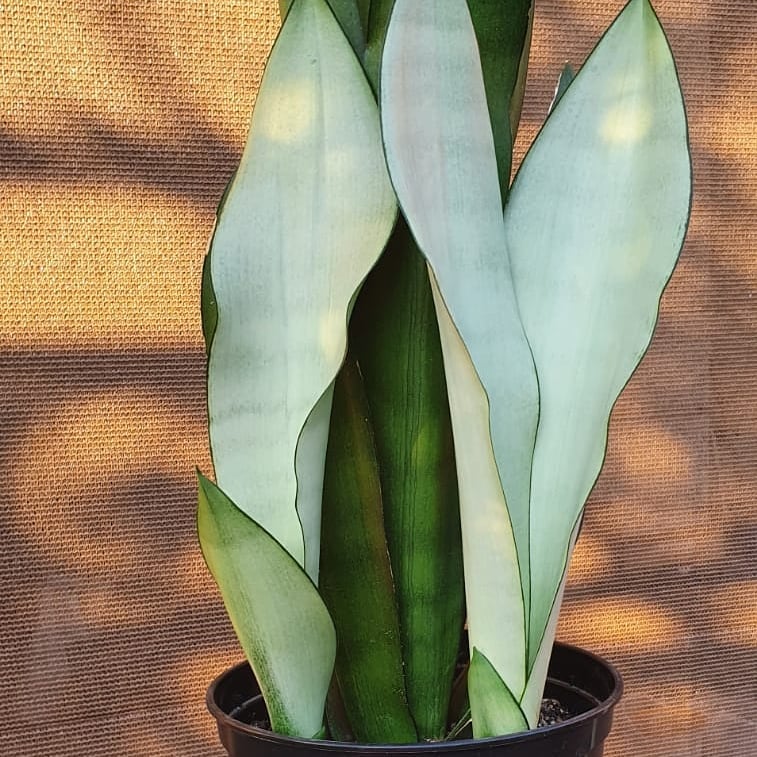
The Silver Moon Snake Plant is a captivating variety distinguished by its smooth, silvery-gray foliage with subtle green undertones. Instead of pronounced variegation, its leaves exhibit a soft, ethereal sheen, giving the plant a luminous quality.
- Light: Bright indirect light; can tolerate low light but variegation may fade; protect from direct afternoon sun
- Water: Allow soil to dry completely between waterings; water less in winter; highly drought tolerant
- Soil: Well-draining, sandy potting mix; can use cactus or succulent soil
- Temperature: Thrives in 65-85°F (18-29°C); can tolerate brief periods outside this range
- Humidity: Adaptable to various humidity levels; prefers average home humidity
- Fertilizer: Light feeding with balanced fertilizer during growing season; none needed in winter
- Pot Type: Container with drainage holes; terracotta pots work well
